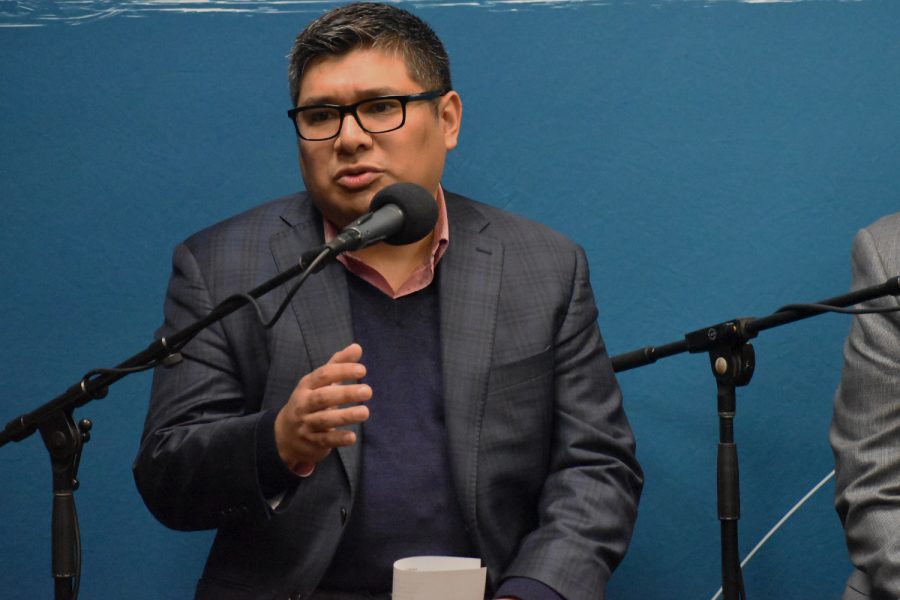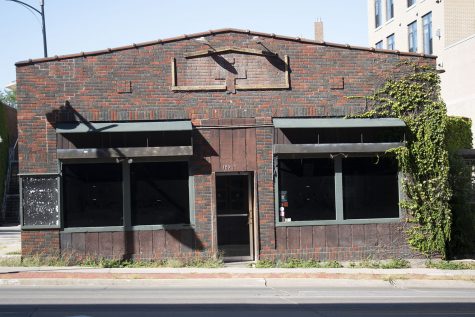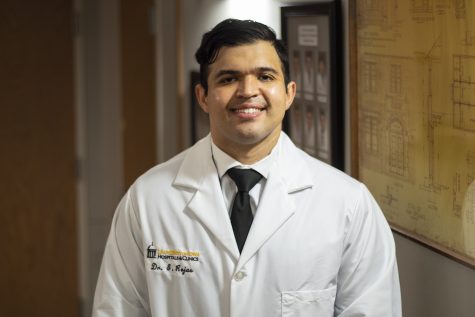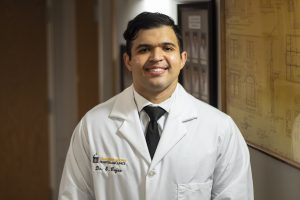Students headed home from the UI may risk spreading COVID-19 to family members
Rates of COVID-19 in Iowa City remain among the highest in the nation, and UI epidemiologists say students headed home or traveling for Labor Day weekend risk spreading the virus to other communities.
Epidemiologist Jorge Salinas talks about the spread of coronavirus during the World Canvas discussion about Coronavirus on Friday, Feb. 21, 2020 at the Old Town Capitol Mall.
September 3, 2020
As Labor Day weekend approaches, University of Iowa epidemiologists are warning about the risk of Iowa City residents bringing COVID-19 to other areas of the state and country.
Jorge Salinas, head of epidemiology at University of Iowa Hospitals and Clinics, told reporters on Thursday that UI students who may be traveling should be very careful about how they socialize and avoid visiting family if possible, especially those with greater health risks.
“I am not very concerned about the possibility of them going places and bringing [COVID-19], because the incidence of [COVID-19] in Iowa City and Johnson County is so high, one of the highest in the country,” Salinas said. “The greatest risk is actually of them carrying [COVID-19] to wherever they go.”
As of Sept. 1, positive COVID-19 cases among students totaled 1,142, and 16 employees reported they had tested positive for COVID-19.
The New York Times lists Iowa City as the fifth-worst metro area in the country in COVID-19 cases per capita in the last two weeks as of Sept. 2. The current rate is 7.2 cases of COVID-19 per 1,000 residents.
As of Sept. 2, Iowa is ranked second highest in increasing COVID-19 cases over the past two weeks by The New York Times, behind North Dakota.
An Aug. 28 campus-wide email said if campus-wide rates of COVID-19 did not flatten over the next week, the university will consider additional actions to stop the spread of the virus.
Salinas said daily case counts in Johnson County have started to plateau.
“The numbers have decreased some – some could see that as good news – they have stopped increasing. Over the past four or five days we have seen a relative plateau,” Salinas said. “The number is still somewhat stable, not growing, but still at a relatively high number. A 100 a day is still a meaningful number.”
Salinas said if the UI does choose to move to online-only instruction, it may not necessarily decrease the state’s overall rate of infection, as students may bring the virus back to their home communities from Iowa City.
“I think that if the students were not here, yes, it could reduce the incidence here in Johnson County. However, now we know that many of them carry the virus, and what we would be doing is transferring the virus to other locations,” Salinas said. “The problem has changed and has become a bit more complex. Asking students to leave town would not necessarily decrease our overall incidence as a state.”
UI President Bruce Harreld released a statement on Thursday asking the UI community to remain diligent in preventing the spread of COVID-19.
“However, we also react to new information as it comes in. We adapt. In that process, we are bound to make mistakes, but our only option is to act in good faith on the information available to us,” Harreld said in the statement. “With that, I ask all Hawkeyes remain committed to the health and safety of campus. This is a collective effort, and we must do all we can. It is critical that we continue to pursue our missions of research and education, but that we do so as responsibly as possible.”





















